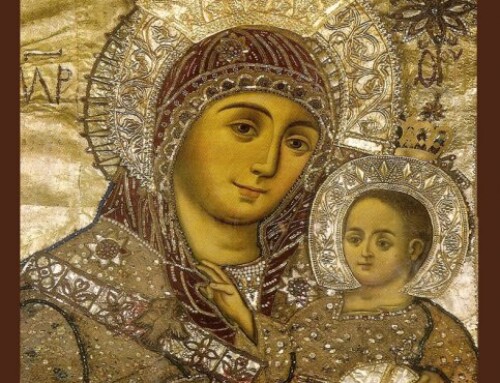Word Magazine September 1969 Page 19
LIVING WITH THE
NICENE CREED
This essay was written by Miss Constance Shemas, 17, of St. Elijah’s Church, Toledo, Ohio, and presented at the Midwest Region SOYO Convention in Detroit, in June 1969. Miss Shemas was the winner of the Midwest Region Oratorical Contest; her presentation is worthy of the attention of THE WORD’S readers.
By 313 A.D., the era of martyrdom had ceased. Constantine’s Edict of Milan had made possible the legal existence of the Christian religion in the Roman Empire. Contrary to the previous times of persecution, during which only a few people accepted the Christian faith in their willingness to die for it, thousands of people now flocked to the places of baptism openly to become Christians. Christianity had become the people’s religion.
The task of explaining the principles of Christianity to the multitudes of new converts was the greatest task that faced the early Church fathers. There was a struggle to keep Christian philosophy pure from the influence of pagan teachings. Many scholars of the time attempted to defend the Christian faith, and to define its message.
Such an apologist, as they were called, was a scholar named Anus. Living in Alexandria in the fourth century, he tried to make Christianity more sensible, and by this, more plausible to the common man. He taught that Jesus Christ was separate from God, not of the same essence. This nullified the concept of the Holy Trinity, which is a basic concept of Christianity.
The controversy was centered around the question, as phrased by Sophie Koulomzin, “Was Jesus Christ God, or was He a god-like man?” In 325 AD., Emperor Constantine convened the Ecumenical Council of Nicea, which brought together all of the great theologians of the time. There was much discussion and there were many arguments in an attempt to settle the dispute. It was owing to the brilliance of St. Athanasius the Great, who defended the faith, that the Arian theory was recognized by the Council as heresy. The Council adopted the first articles of the Creed which stated in clear language that they believed “in one God, the Father Almighty, Maker of heaven and earth, and of all things visible and invisible: And in one Lord Jesus Christ, the Son of God, the Only-begotten, Begotten of the Father before all worlds. Light of Light, Very God of Very God, Begotten, not made: of one essence with the Father, by whom all things were made.”
Later Councils went on further to explain the beliefs of Christianity, and the Nicene Creed took the form as we know it today. The conception, crucifixion, and resurrection of Jesus Christ were construed in the middle passages. The entire life story of the Savior was revealed in this portion of the Nicene Creed.
Today men are not restricted in their religious beliefs and practices. And just as the newly-liberated Christians of Constantine’s time, we ask, “Just what is Christianity all about? What does it have to offer me?” In an age when God is supposedly dead, when drugs “magnify” the senses, when poverty, war, and death flash across headlines, man needs something to believe in and to hope for.
The first six articles of the Creed tell of the nature and life of Christ, the something that man can believe in. But the last six articles are those which can be of greatest value to us in our lives today. They provide the answer to many questions and give hope for the future.
The glorious life after death which lies ahead for us is foretold: “And he shall come again with glory to judge the quick and the dead, whose kingdom shall have no end.” Even the mystery of the Holy Spirit is accounted for, although its comprehension is difficult. The article states that there is a Holy Spirit which, together with the Father and the Son, is worshipped as a part of the Holy Trinity.
The statement of conviction in the faith as being the true Church, with the Sacrament of Baptism as the means of salvation is expressed. “And I believe in One Holy Catholic and Apostolic Church. I acknowledge one Baptism for the remission of sins.”
And finally, the last two articles of the Nicene Creed are probably the most beneficial to us in living today. The confession of faith ends in the statement that there is a future for man, for you and me. For, “I look for the Resurrection of the dead, And the Life of the world to come, Amen.”


